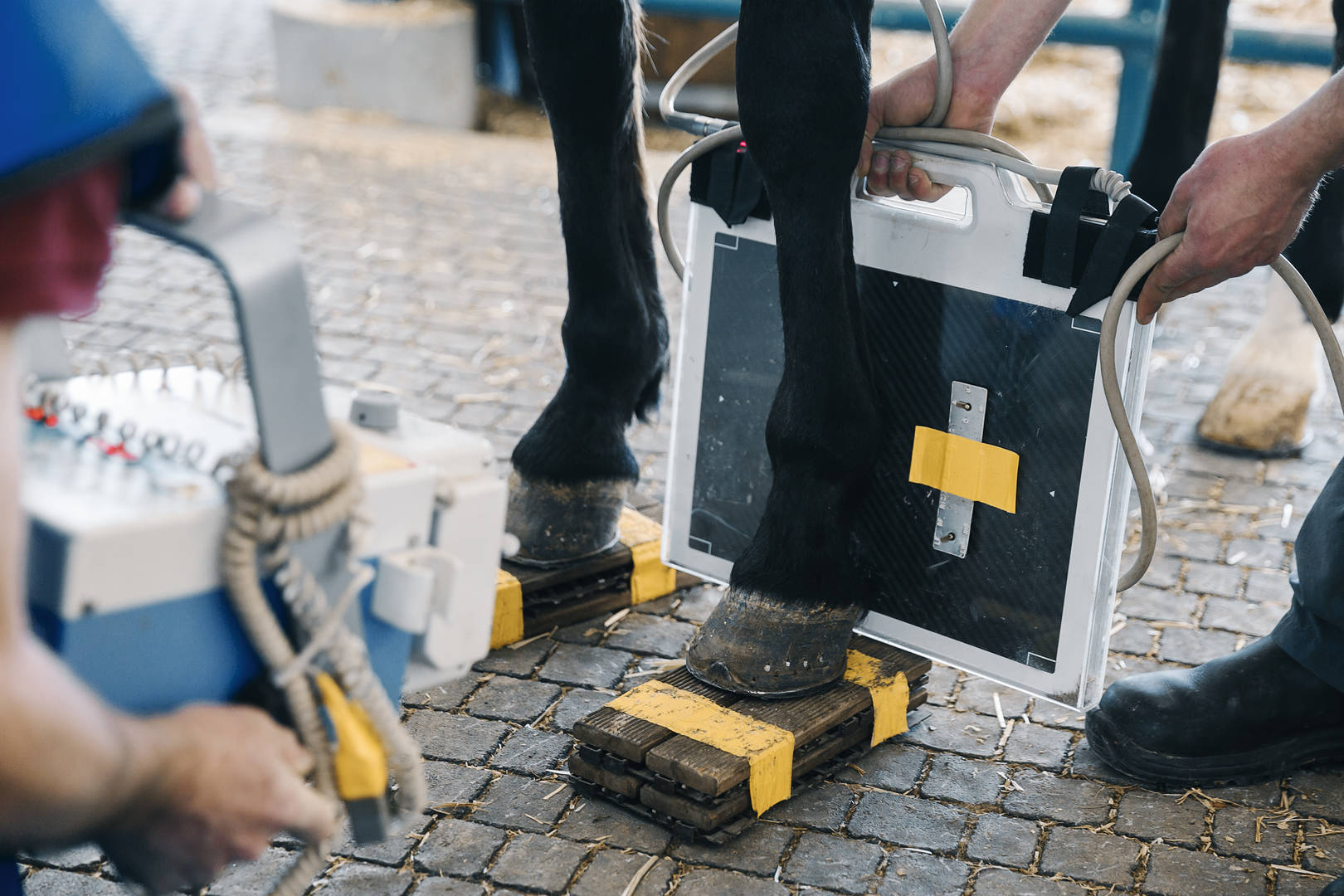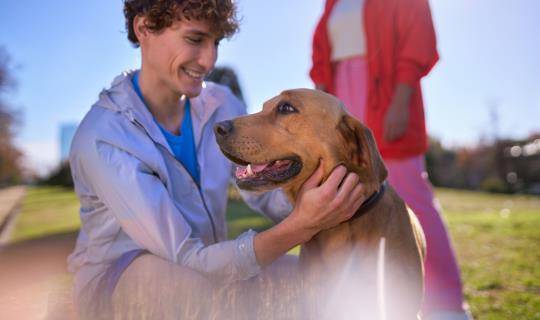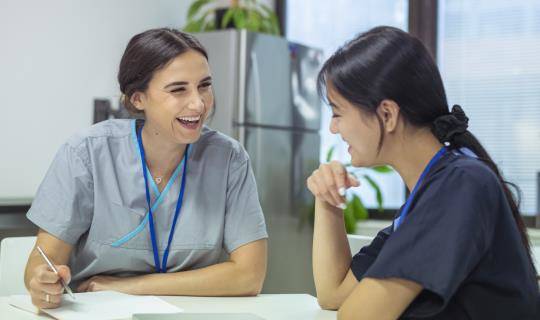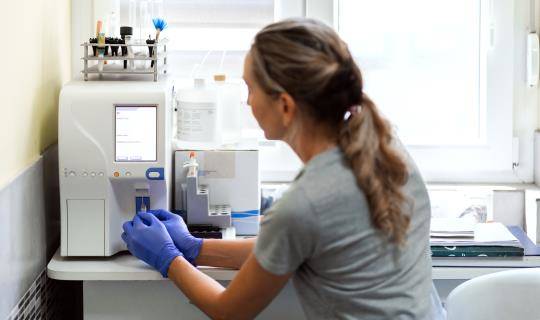Q&A: What should equine veterinary practices understand about diagnostic imaging?
By Katherine Garrett

We sat down with Katherine Garrett, DVM, DACVS, shareholder and director of diagnostic imaging at Rood & Riddle Equine Hospital in Lexington, Kentucky, and newly appointed vice president of the American Association of Equine Practitioners (AAEP) to get her thoughts on the latest digital imaging trends, how equine practices can be more innovative, and the value of membership in the AAEP.
Q: What do equine practices need to know about current diagnostic imaging equipment trends?
Katherine Garrett: Probably the biggest trend over the past 20 years has just been the advent of digital imaging in general, both in terms of the diagnostic value, which is obviously huge, but also in terms of owner education and keeping that relationship between the owner and the veterinarian strong.
From a diagnostic perspective, if the equine veterinarian needs to refer a horse to another specialist, they can email radiographs. The collaborative aspect is fantastic, both from a primary care veterinarian's point of view and the referring hospital's point of view.
The great thing about digital imaging is the teaching opportunities it gives the veterinarian on the farm or at the barn. They can show the owner the images and point and say, "This is the problem." It's such an educational tool. Veterinarians being able to leverage those sorts of things is really important, especially as owners are more and more savvy with the internet and “Dr. Google" and all those other sorts of things. By veterinarians positioning themselves as the educators, it helps keep that relationship between the horse owner and the veterinarian as the primary way that horse owners get their information, as opposed to the stranger on the internet.
Q: How does proper imaging fit into the health cycle of the animals?
Katherine Garrett: Equine veterinarians are going to have the best success with treatment if they can identify the problem as specifically as possible. That is one of the things that I like best about imaging, it helps you figure out why the horse might be exhibiting certain behaviors.For example, if there is a lame horse, the veterinarian knows the problem is in the foot. However, there are so many different things that could be wrong in the foot. Does the horse have a wing fracture in P3 or does it have a torn tendon? The treatments for those two problems can be completely different but present themselves similarly.
Getting that horse back to work or back to trail riding or jumping or dressage is going to be easier if the veterinarian can identify the exact issue. The more they know about the problem, the better they can help the horse. That's how imaging fits into the health cycle. Imaging is in the knowledge is power category.
Q: Can you share an example of equipment exceeding expectations?
Katherine Garrett: We've had a CT scanner at Rood & Riddle since 2019. We knew that we'd use it for skull fractures, dental disease, limb fractures, and more.One thing that I did not think that we would use it for were fractured ribs in foals, even though we see a fair number of that injury. It can be difficult to diagnose with ultrasound. We started putting the foals through the CT scanner immediately before surgery to repair the fractured ribs, and it was amazing. We saw beautiful three-dimensional pictures of the entire ribcage. Our survival rate increased from 57 percent to 91 percent.
Whenever we have added a new technology to our practice, there are scenarios where we didn't initially realize we would end up using the machines. Those, to me, are some of the most exciting things because that's the gravy, the bonuses.
Q: What guidance would you give a veterinarian about digital imaging equipment they need to set up an equine practice?
Katherine Garrett: Don't buy equipment that you're never going to use. If this particular ultrasound is intimidating to you and there's going to be a barrier to getting comfortable with it and using it, then it might not be the right ultrasound for you. Don't be afraid of the equipment, make sure you know how to use it.When you're looking at equipment, make sure that it's upgradable. You may buy the newest technology now but how can that service provider keep you going in the future? Are there are new updates or new and different ultrasound probes? Is there education in the form of online classes or wet labs that they can provide? Consider choosing one staff member as the champion for the equipment. They can attend the continuing education and share the learnings with the team.
Q: How does purchasing the right equipment showcase innovation or future-proof a veterinary practice?
Katherine Garrett: Buy the right technology for you and your practice. And if you've got associates who are tech savvy and truly want to use it, then maybe buy the more advanced equipment. But if you buy equipment that everyone in the practice is afraid of, no one will use it.Make sure your equipment can grow with you, rather than pigeonholing yourself into only what is good for today. Maybe a veterinarian has grown comfortable doing reproductive ultrasounds but now wants to offer musculoskeletal imaging. Does their ultrasound accommodate additional probes so they can expand their offerings?
"The great thing about digital imaging is the teaching opportunities it gives the veterinarian on the farm or at the barn. They can show the owner the images and point and say, 'This is the problem.' It's such an educational tool."
Q: If an equine practice is only going to make one big purchase this year, what would you recommend they invest in and why?
Katherine Garrett: It depends on your practice focus. What do you think that you would get the most out of putting into your practice or upgrading in your practice?
As far as the imaging side goes, I would say digital radiography. If a practice doesn't have that, it's a versatile workhorse. Generally, in horses, diagnostic imaging starts with radiographs, then moves onto ultrasounds.
If they already have digital radiography, I suggest digital ultrasonography as the next investment. If a veterinarian owns a practice that's heavy on sport horse services, purchasing an ultrasound is a smart investment.
Q: What do you predict will be hot topics in the equine veterinary industry next year?
Katherine Garrett: Equine welfare is always a hot topic. How are medications used appropriately in horses? How can we take the best care of our horse companions and athletes? I don't think that ever really goes out of style.
New technologies are always exciting, and one example is PET scans for horses. It's very new and honestly, it's only at a couple of racetracks and at a couple of vet schools. Maybe in two or three years, we'll start hearing more about that, but it is very exciting to potentially have a new way to look at bone injuries in horses.
Q: What are some of the benefits of your membership in AAEP? What attracted you to the vice president appointment?
Katherine Garrett: It's a huge honor, and I was pretty surprised it happened. I've been really fortunate to have been involved with the AAEP since two years after I graduated vet school. A lot of my mentors have been heavily involved in the organization, so I've had them modeling its benefits.
One of the things that I love is meeting people that I would not have met otherwise. Veterinarians can get very pigeonholed and only know the people in their specialty.
But I've met theriogenologists who are amazing people. Listening to their research or how they approach practice has been such an education.
AAEP is an easy organization to volunteer in, and once you've done it, you don't want to stop volunteering. It's been a wonderful and extremely rewarding organization to be involved in. I love it.





